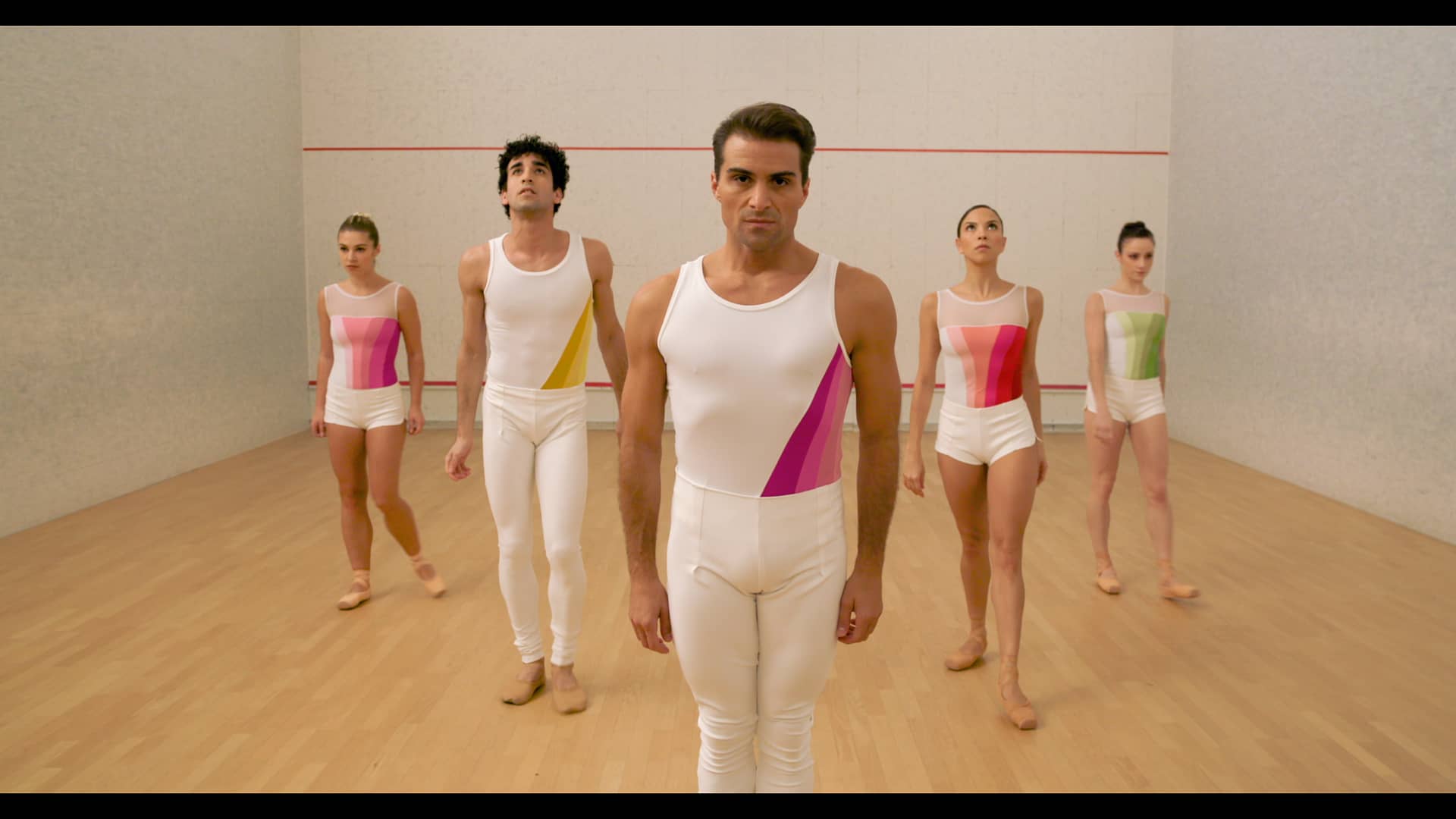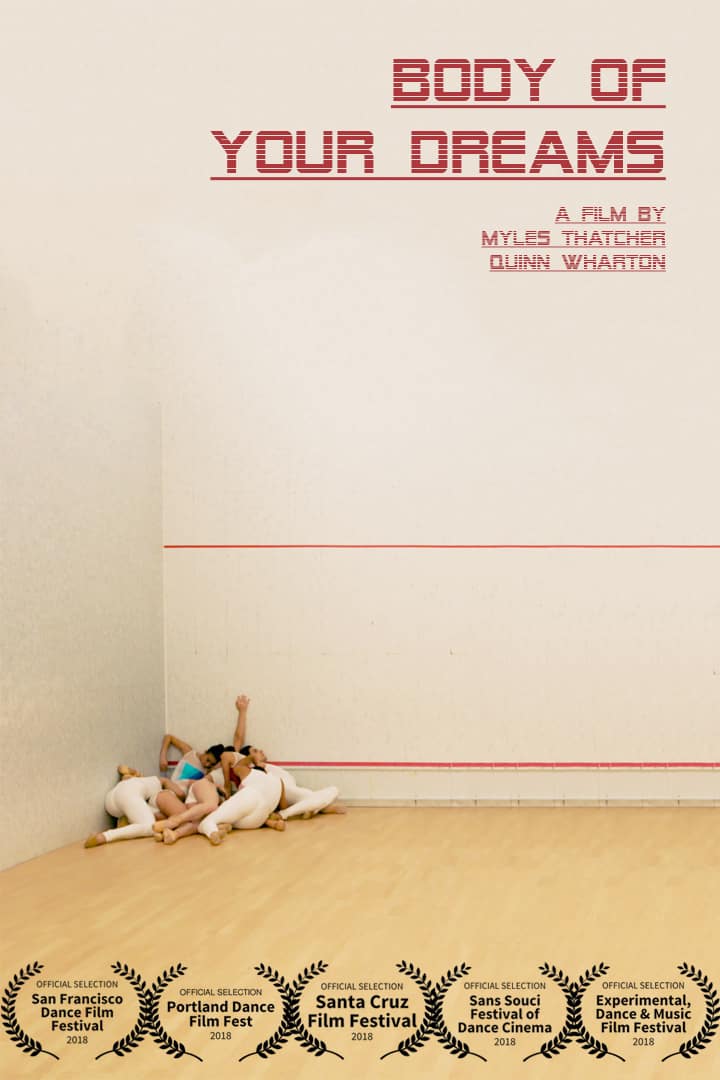

Interview with Quinn Wharton
Director Quinn Wharton
Director of Photography Chris Rejano
Choreographer Myles Thatcher
Company The Joffrey Ballet
Composer Jacob TV
Country USA
Rolex Mentor and Protoge grant recipient
Body of Your dreams is a short film choreographed by Myles Thatcher and Directed by Quinn Wharton. It looks at the pressures of modern body image and fitness in the pop coated visuals of a squash court. The dancers of the Joffrey Ballet fly through the space and encounter cracks in the beautiful world when face to face with the box they live in.
Official selection of the San Francisco Dance Film festival, Santa Cruz Film Festival, and San Souci Film Festival. The dance piece was originally choreographed on the San Francisco Ballet before being adapted to film by The Joffrey Ballet.